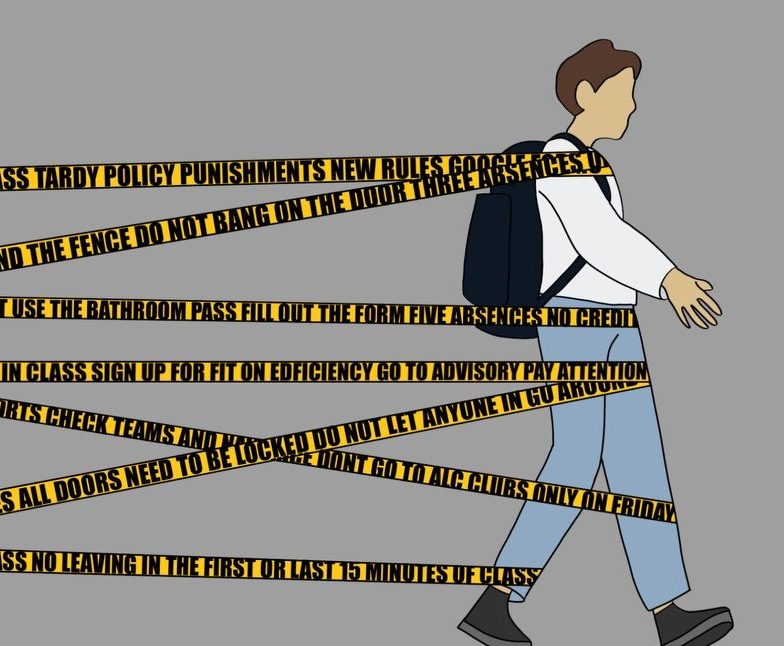New school rule. Rinse. Repeat.
In terms of policy, the first semester was pretty quiet, excluding the construction of a fence around the campus after the school year began. But the spring semester thus far has been one new policy after another after another. A new bathroom sign-out system. A new FIT system and new guidelines about when clubs can meet. New rules about how many periods you can miss and still earn credit for the class. Most recently, a new tardy policy that could leave students in lunch detention.
The problems these new policies are meant to address, such as absence and tardiness, are persistent and detrimental to the learning environment. But drastically changing school policy well into the school year won’t solve them; instead, these policy initiatives create an environment of constant change where stability is needed and make it impossible for administrators to create lasting, effective norms.
Constantly changing or implementing new policies creates an unstable learning environment, which is exactly the opposite of what students need. While change is a part of life and we must learn to adapt to it, school is a place that teens should be able to count on for consistency and security. Rules are meant to provide clarity. When they’re constantly changing or being replaced, however, they confuse those who are supposed to obey them. This is already a tumultuous time for many students. Right now, high school makes up our whole world; we don’t need the structures of that world to be in constant flux.
Additionally, it’s a bit late in the year to make such drastic changes. The school year is nearly over; why change the rules of the game at its end? It feels unrealistic to ask students to respect a new rule when they’ve done things differently for the whole year. These policies target important issues and could make a positive impact if implemented at the right times. Perhaps administrators should simply take note of persistent problems and save their solutions for the fresh start of the next school year. New year, new rules, right?
Finally, ceaseless change makes it impossible to create lasting norms. FIT and tardies, for example, have changed multiple times throughout the year, making it difficult to remember which system is the most current. What’s more, the constant rate of change creates a sense that all rules are temporary. Students are disinclined to adjust to new rules if they feel they’ll change again. To encourage obedience, administrators should stand firm on the policies they already have in place.
The administration has a right to shape school policy as it sees fit; that’s its job. But to effectively do this, school leaders should consider the timing and effectiveness of the policies they’re creating. Administrators should wait until the next school year to implement changes and hopefully see widespread results. Even better, perhaps the administration could focus on what causes the persistent issues of tardiness, class-skipping and absence instead of dealing out punishment as they happen. Understanding why students miss class could nip these problems in the bud, negating the need for constant policy change. Because, in the end, patching leaks as they spring up won’t stop the boat from sinking.







Josie Fisher • May 13, 2024 at 3:40 pm
I thought this was a great article. It had a great message and I loved all the visuals. I liked the quote and how it stated a lot of what I was thinking, saying that the rules are always changing and students get lost in the midst of it all and creates an unsteady learning environment.